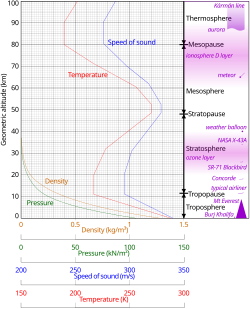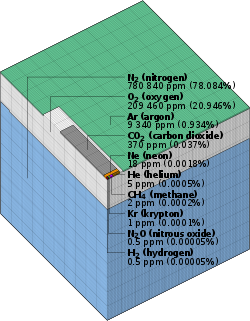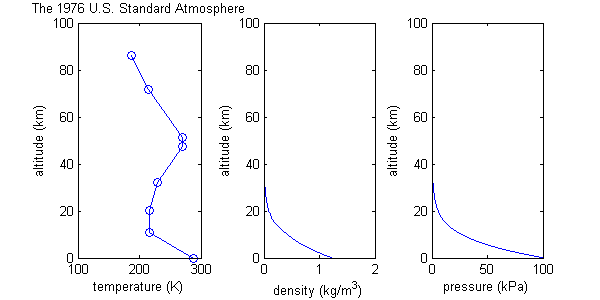Methodology
The USSA mathematical model divides the atmosphere into layers with an assumed linear distribution of absolute temperature T against geopotential altitude h. [2] The other two values (pressure P and density ρ) are computed by simultaneously solving the equations resulting from:
 , and
, and

at each geopotential altitude, where g is the standard acceleration of gravity, and Rspecific is the specific gas constant for dry air.
Air density must be calculated in order to solve for the pressure, and is used in calculating dynamic pressure for moving vehicles. Dynamic viscosity is an empirical function of temperature, and kinematic viscosity is calculated by dividing dynamic viscosity by the density.
Thus the standard consists of a tabulation of values at various altitudes, plus some formulas by which those values were derived.
To allow modeling conditions below mean sea level, the troposphere is actually extended to −2,000 feet (−610 m), where the temperature is 66.1 °F (18.9 °C), pressure is 15.79 pounds per square inch (108,900 Pa), and density is 0.08106 pounds per cubic foot (1.2985 kg/m3).
This page is based on this
Wikipedia article Text is available under the
CC BY-SA 4.0 license; additional terms may apply.
Images, videos and audio are available under their respective licenses.




